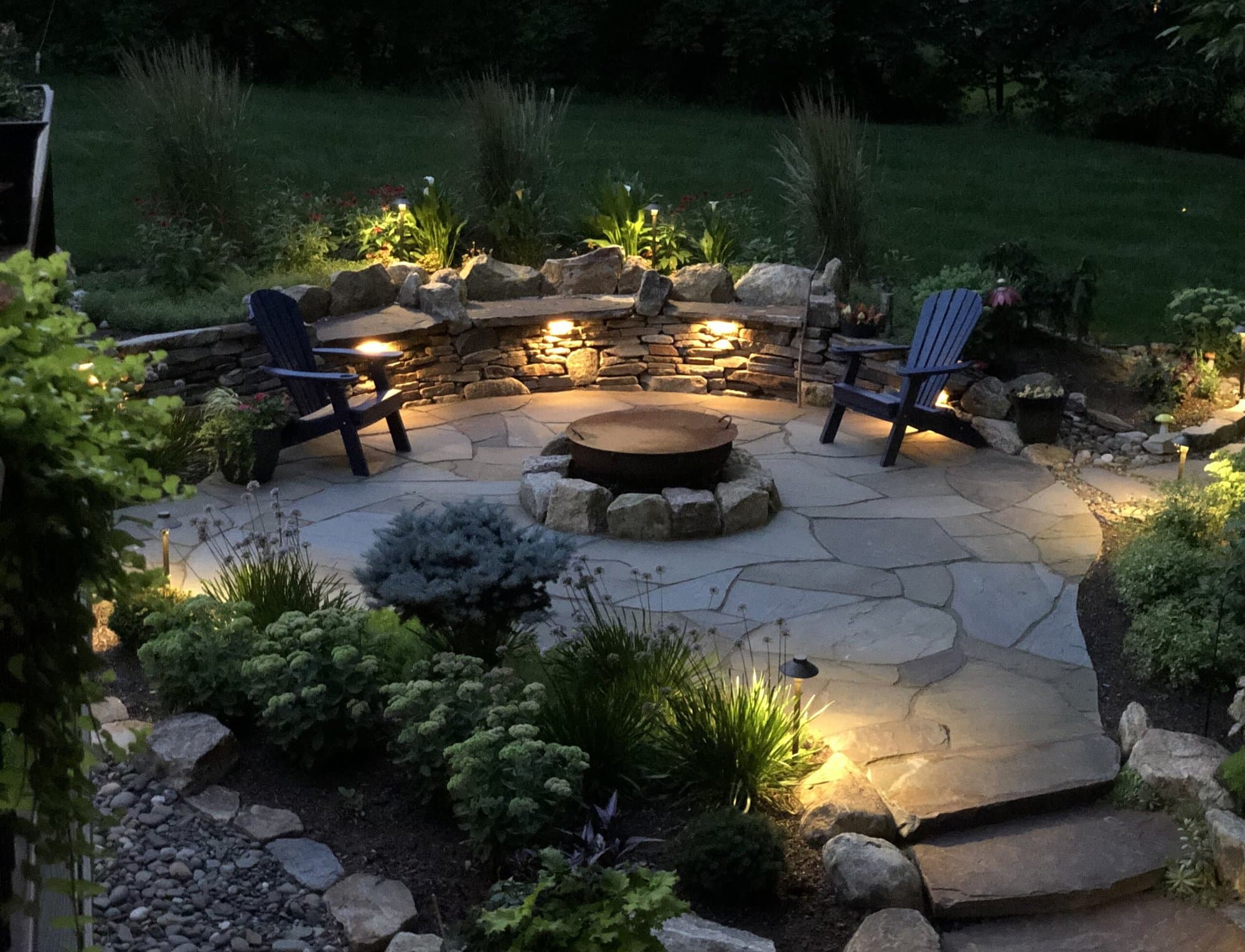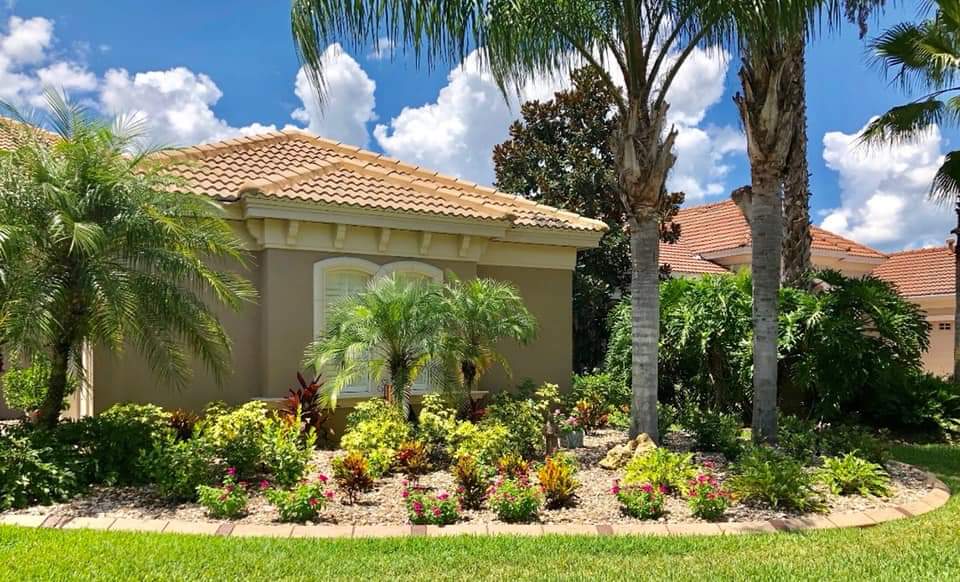Update Your Residential Property with Customized Palm Desert Landscaping Solutions
Update Your Residential Property with Customized Palm Desert Landscaping Solutions
Blog Article
A Comprehensive Overview to Designing and Implementing Effective Landscaping Solutions
The art and science of landscaping extend beyond mere looks; they involve a thoughtful assimilation of layout principles, environmental stewardship, and practical application. What approaches can one use to make sure these landscapes not just prosper however additionally flourish in harmony with their surroundings?

Understanding Landscape Layout Principles
One could question what fundamental components add to reliable landscape style. At its core, effective landscape design hinges on several key concepts that assist the arrangement and selection of aspects within a space. These principles consist of unity, rhythm, balance, and proportion, each offering to develop an unified outdoor environment.
Unity refers to the natural partnership among numerous components, ensuring that they collaborate visually and functionally. Balance can be accomplished through unbalanced or balanced arrangements, allowing the landscape to feel secure and welcoming. Proportion involves comprehending the range of aspects in relation to each various other and the surrounding atmosphere, advertising aesthetic harmony and comfort.

Examining Your Outdoor Area
Before applying the concepts of landscape design, a thorough analysis of your exterior area is important. This initial evaluation helps specify the range of your landscape design job and makes certain that your style straightens with the distinct qualities of your residential property. Begin by assessing the dimensions of your room, taking specific dimensions to comprehend the offered location for different elements such as gardens, paths, and outdoor patios.
Next, observe the existing functions of your landscape, consisting of topography, dirt quality, and drain patterns. These factors dramatically affect plant option and placement. In addition, analyze the sunshine exposure throughout various areas throughout the day, as this will impact the kinds of plants that grow in your garden.
Think about the microclimates produced by structures, trees, and other challenges, as they can influence temperature level and moisture degrees. Take note of any type of existing plants or hardscape elements that you wish to maintain or remove. This detailed assessment prepares for a well-informed and effective landscaping option, guaranteeing that your design is not only cosmetically pleasing but lasting and also useful for several years ahead.
Sustainable Landscape Design Techniques
Including sustainable landscape design methods is crucial for producing an ecologically responsible outside space. These practices not only advertise ecological balance yet likewise enhance the functional and visual worth of a landscape. One fundamental technique is the utilization of native plants, which require much less water and maintenance while sustaining local wild animals. Carrying out reliable irrigation systems, such as drip irrigation, reduces water waste and guarantees that plants obtain appropriate dampness.

Another reliable technique is the strategic placement of shrubs and trees to provide natural windbreaks and shade, hence decreasing power expenses (Palm Desert Landscaping). Rainfall yards can be integrated into the landscape click here now design to handle stormwater runoff effectively, filtering pollutants prior to they get in waterways
Picking the Right Plants
Picking the right plants for your landscape is vital to accomplishing both aesthetic allure and eco-friendly harmony. The procedure starts with an understanding of your local climate, dirt problems, and the specific microenvironments within your landscape. Examining aspects such as sunshine direct exposure, dampness degrees, and existing vegetations will assist you select plants that prosper in your special setup.
Take into consideration integrating indigenous plants, as they are well-adapted to neighborhood conditions, need much less upkeep, and assistance local wild animals. Additionally, picking a varied variety of types can boost biodiversity while reducing the risk of illness and bug break outs. It is necessary to assess the development practices, blooming durations, and seasonal shades of potential plants to produce a vibrant and cohesive landscape.
In addition, consider the intended use the room; for circumstances, if the location will experience high foot web traffic, choose resilient ground covers. By thoughtfully selecting plants that straighten with both your aesthetic goals and environmental requirements, you can produce a lasting landscape that not just improves your building however additionally adds positively to the bordering ecological community.

Execution and Upkeep Strategies
When the best plants have been chosen for your landscape, the emphasis moves to efficient application and recurring upkeep techniques. Effective installation starts with appropriate website prep work, that includes dirt testing to establish nutrient levels and pH, adhered to by amending the soil as required. Very carefully prepare plants according to their development habits and light needs, ensuring adequate spacing to advertise healthy growth.
Watering is a vital element of execution. Establish a watering timetable that thinks about the certain his response requirements of each plant types, adjusting for seasonal adjustments. Using drip watering systems can enhance water effectiveness and reduce drainage.
Upkeep approaches need to be implemented to make certain the long life and vitality of your landscape. Normal jobs consist of weeding, mulching, and pruning to manage growth and avoid disease. Fertilizing should be carried out based on dirt tests, supplying the required nutrients without over-fertilizing.
Keeping an eye on for conditions and bugs is vital; early detection can prevent substantial damage. Last but not least, seasonal adjustments to upkeep routines, such as preparing and winterizing perennials for spring development, will ensure that your landscape continues to be healthy and balanced and aesthetically appealing year-round.
Verdict
Successful application and ongoing upkeep further make certain the durability and vitality of landscapes. By integrating these elements, landscapes can be transformed right into beautiful, functional atmospheres that promote biodiversity and add positively to neighborhood well-being.
One may wonder what foundational elements add to reliable landscape style. At its core, successful landscape design pivots on several crucial concepts that assist the plan and selection of elements within a space.Picking the right plants for your landscape is critical to attaining both visual allure and environmental consistency. It is crucial to evaluate the development habits, growing periods, and seasonal shades of possible plants to develop a natural and vibrant landscape.
When the appropriate plants have been selected for your landscape, the emphasis shifts to efficient implementation and ongoing maintenance methods.
Report this page